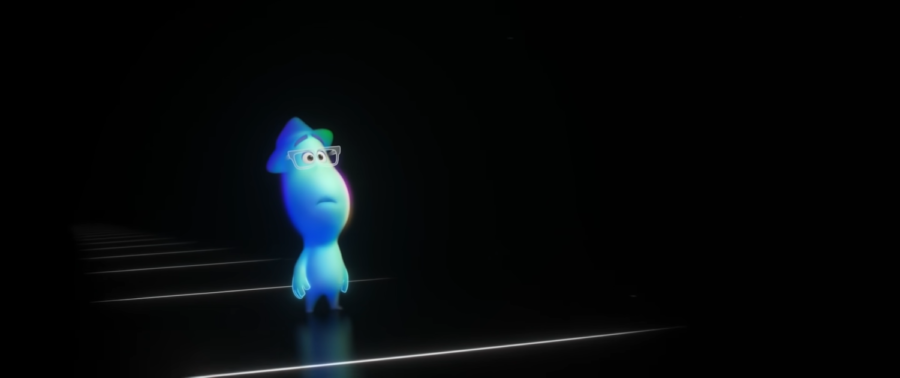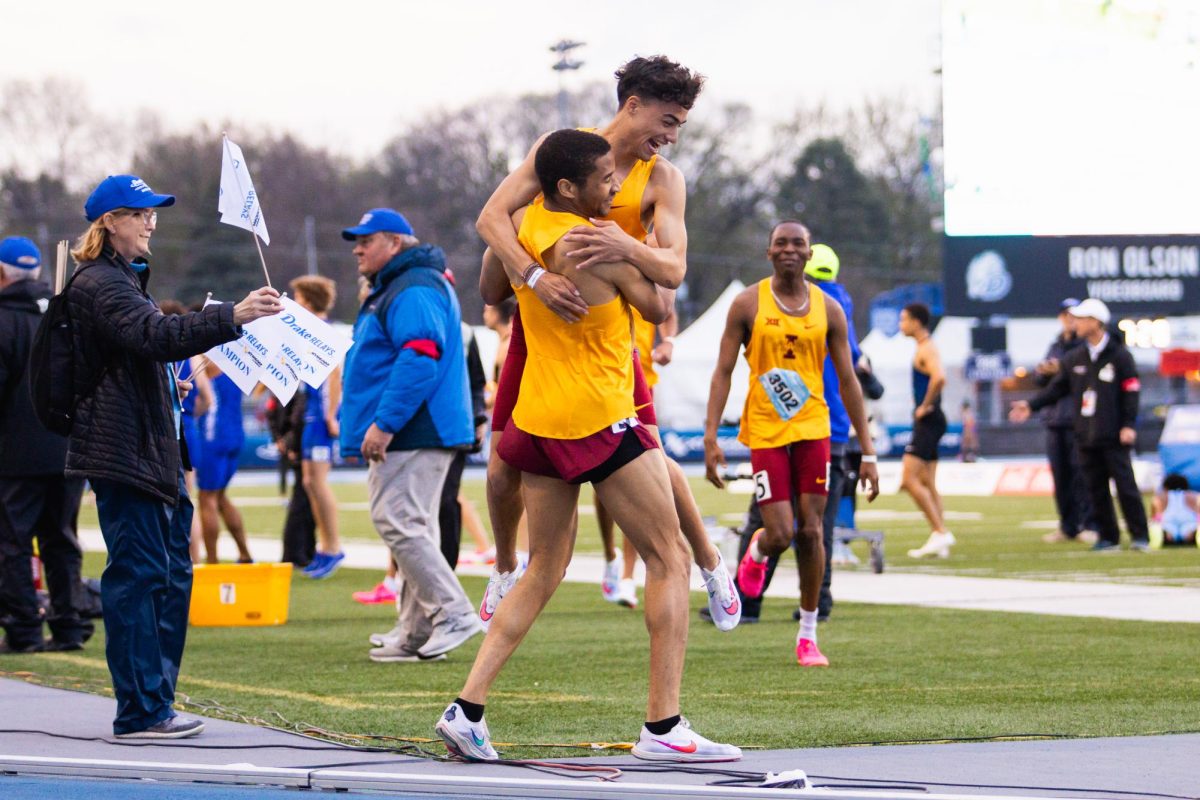Editorial: Disney needs to do more with representation within its media
In the upcoming Pixar movie “Soul,” the African American lead character is transformed into a bloblike creature.
September 17, 2020
The Walt Disney Company is a well-known organization that has sought to bring joy to children through the use of movies, other media and their theme parks. Though they have made progress in the last few years with regards to representation in their movies, they need to do more.
The reason for why they need to do more is obvious, they have a past they definitely need to make up for.
Disney has frequently come under fire for characters that promote racist stereotypes. The crows in “Dumbo,” released in 1941, encapsulate stereotypes of African Americans. One of the birds was even named “Jim Crow.” If you don’t understand why that is bad, look here.
The racist stereotypes continue in 1967’s “The Jungle Book,” with the monkeys portraying Black people as foolish and criminal. Then the hyenas in “The Lion King,” released in 1994, could represent racially marginalized communities who live on the wrong side of the tracks.
There is also 1953’s “Peter Pan,” Peter’s friend Tiger Lily belongs to a Native American tribe he and the Darling siblings visit at one point in the film. The depiction of Native American culture is blatantly stereotypical with the characters speaking in gibberish instead of an actual indigenous language, smoking excessive amounts of pipe tobacco and singing an offensive song called “What Made the Red Man Red.”
“Lumping all American Indians together as one monolithic caricature is grossly offensive, because these are real people, with many, many different cultures,” wrote Elizabeth Broadbent for The HuffPost.
Peter and the Darlings also appropriate the tribe’s culture, wearing headdresses, brandishing tomahawks and making stereotypical “whooping” noises.
Now more recently when Disney decided to put out Disney Plus in 2019, the company tacked warnings onto the beginnings of some movies indicating they might include racist or otherwise offensive elements, a move that fails to go far enough.
The message that airs before classic films including “Dumbo” and “Peter Pan” on Disney Plus says the movie is shown as it originally was made and “may contain outdated cultural depictions.”
The decision to attach this message to some animated films was met with both praises from people who viewed it as an accountability measure and criticism from those who thought its wording was dismissive. The mixed response, experts say, highlights the fact Disney has only begun to take responsibility for the problematic representations.
A huge misrepresentation cycle Disney continues to promote and take part in is its prevalence for turning lead characters of color into either animals or nonhuman beings.
The young Mexican musician Miguel in Pixar’s “Coco” starts transforming into a skeleton around 28 minutes in. He isn’t fully human again until about an hour later.
Disney’s “The Emperor’s New Groove” sees the Incan prince Kuzco converted into a llama about 22 minutes in. He stays that way for 54 minutes.
Then in “Brother Bear” an Inuit boy named Kenai turns into a bear at the 16-minute mark. After wandering the wild for 53 minutes, he chooses to become a bear permanently.
All three characters represent populations and cultures that haven’t been given many chances to even feature or star in animated films.
We’ve also seen it with Disney’s “The Princess and the Frog,” in which Disney’s first Black princess, Princess Tiana, was turned into a frog for the majority of the film. A kiss turns Tiana into a frog around 30 minutes into the movie. She spends an hour as a frog before she fully turns back into a human again.
“When you can consider that the movie runs at 138 minutes, including credits and that it cuts away to several side plots, this means audiences spend less than half an hour with Tiana appearing as a Black woman,” said Andrew Tejada with TOR.com.
Then in 2019, Blue Sky Studios, which is owned by Disney, unveiled a Will Smith starring movie called “Spies in Disguise.” Smith’s character is turned into a pigeon at around the 30-minute mark and it takes him 43 minutes to become human again. This left audiences with a total of 45 minutes of screen time where he’s a Black man.
The most recent example of this is Pixar’s “Soul,” which doesn’t come out until November. “Soul” marks the first Pixar movie with a Black character as the lead. Joe Gardner, a middle school music teacher, is the lead character, but based on the trailer, Gardner is separated from his Black body and relegated to being a teal mass form for most of the film.
These examples are just the tip of the iceberg with Disney, for there are many more out there and other issues besides just portrayal of characters on screen.
Because we want and need Disney and other media companies to move forward with their representation, it is important we recognize where they have improved.
There are a few examples of animated movies in recent years that prove filmmakers can invest in characters of color without caveats.
“Moana” centers a bold Polynesian princess without ever changing a hair on her head; this in turn gave audiences time to learn about Moana’s culture and become familiar with her beliefs. She also comes without a love interest and represents an independent woman of color.
In 2020, the animated short “Hair Love” won an Oscar by focusing on the significance of hair within a Black family, as a father learns to do his young daughter’s hair for the first time. The only physical thing that changes about the characters throughout the story is their hairstyles.
In 2018, Sony’s “Spider-Man: Into the Spider-Verse” centers on a young man named Miles Morales. Before he learns how to leap across the city and take out villains, audiences have a chance to see what Miles’ life is like as a young bilingual Black and Puerto Rican man growing up in New York. While Miles is living his life and struggling with realistic struggles he gains spider powers that enhance his physical abilities, but most importantly without changing his appearance.
This isn’t the only amazing superhero movie to focus on representation. Many Marvel fans will remember when “Black Panther” came out in 2018. With an all-star collection of majority Black talent both in front of and behind the camera, “Black Panther” is not just about a superhero’s journey, it’s also about Black culture’s journey, and it points toward a future where it could be the culture.
“It acknowledges and celebrates everything from traditional African society to African-American political debates, from the power and beauty of black women to the preservation of identity, all within the lush confines of the fictional African nation of Wakanda,” said Tre Johnson with Vox.
These are some of the many ways Disney has progressed beyond majority white casts and into a new age where it is focusing on how it represents people and their cultures. It is also important to note where Disney has “corrected the record” and fixed their past mistakes.
One example of this is the “Song of the South,” a 1946 film that takes place on a Southern plantation during the Reconstruction era. The movie has been commonly called out for glorifying plantations and is not available on Disney Plus. The “not streaming on Disney Plus” is the good part of a movie that is overall very terrible.
Another example is in the new live-action remake of “Lady and the Tramp” where the Siamese cats that depict Asian stereotypes in the original movie are not portrayed as Siamese, just normal house cats, no racist theme song included.
So yes, Disney has done some good, but we need more.
When it comes to representing people in animation, we need more and more stories like “Moana” and “Hair Love” and “Into the Spider-Verse.” These movies are excellent examples of how to represent characters of color and they all proved you don’t need to change the physical appearance of marginalized leads in order for audiences to embrace them.
“When you craft great animated stories about characters of color living in their worlds, people will support them,” saidAndrew Tejada on TOR.com. “And maybe, just maybe, seeing these diverse characters in theaters will help audiences understand other realities, and other kinds of experiences, by seeing what someone who doesn’t look like them goes through every day.”
Now Disney just needs to do more. This is not about adding diversity for diversity’s sake, it is about real representation. About showing that the world is made up of people beyond just white cisgender straight fully-abled people.
Where is the LGBTQIA+ representation? Where is the mentally and physically disabled representation? Where is the transgender representation? Where is the representation of women who do not need a love interest? Where is the representation of religions other than Christianity?
We have seen some representation of people of color, so let’s keep it up. Don’t change them into nonhuman creatures, don’t change their hair, don’t add them in just for the “Black friend” trope, don’t portray them as “other,” just show people of color as the true people they are.
Disney, you are doing good, just keep going. Strive for the new storylines, strive for the true representation, strive for showing kids from all backgrounds they are real, show them others out there exist too.

















